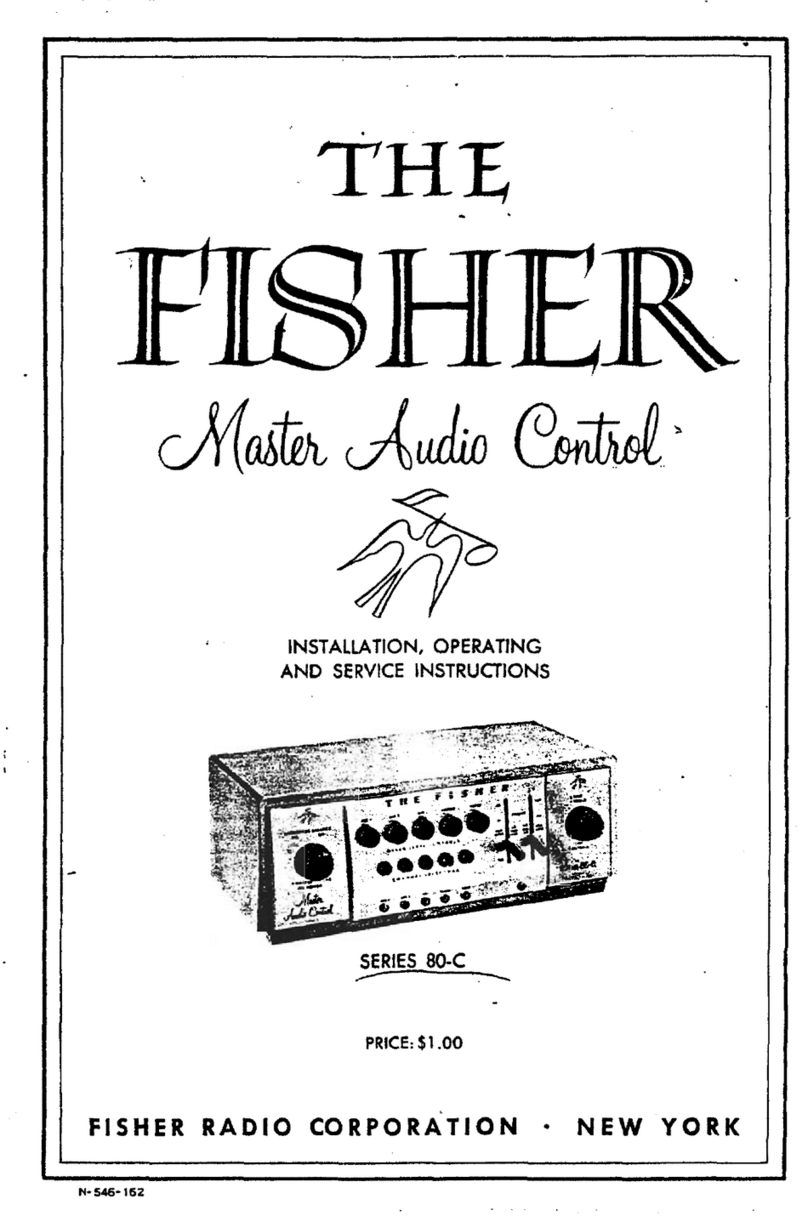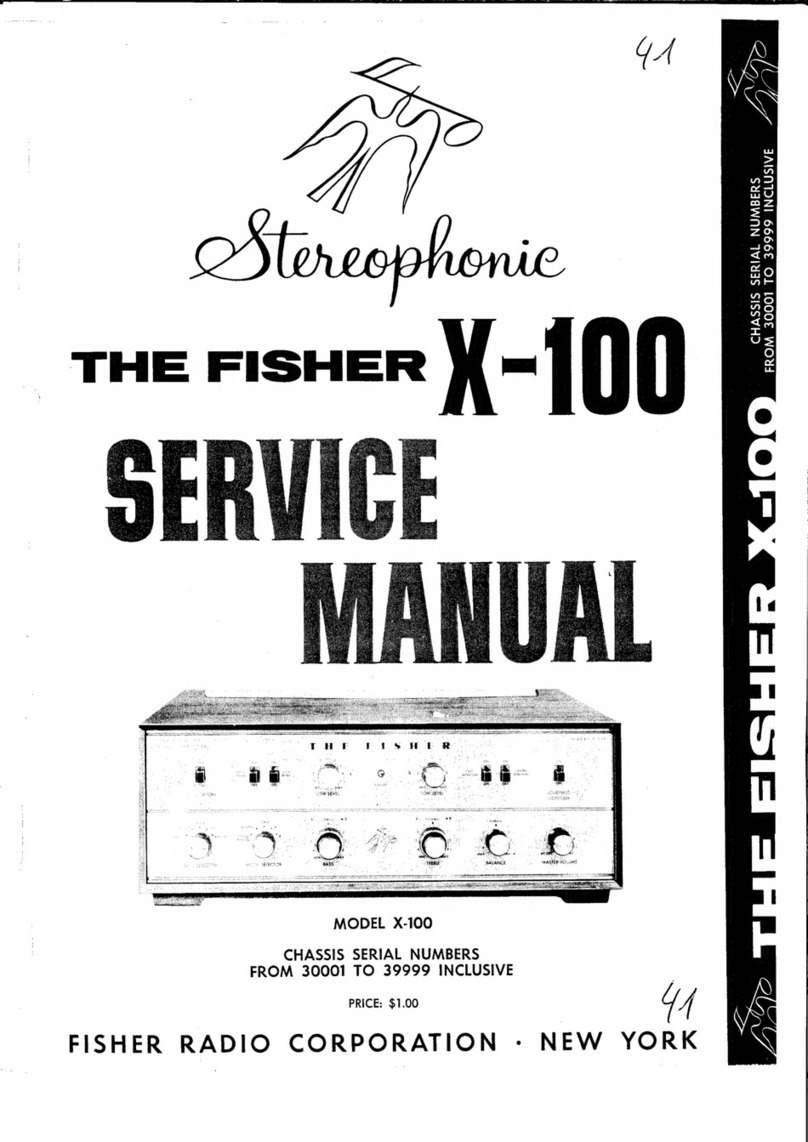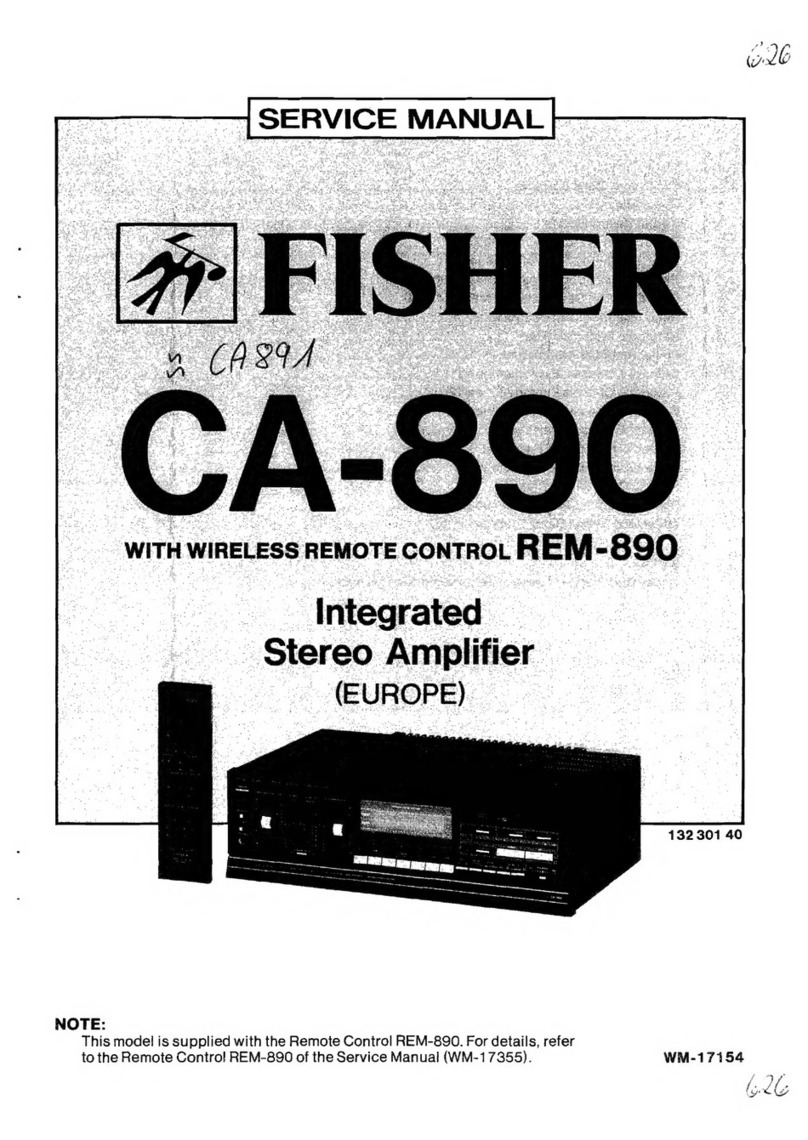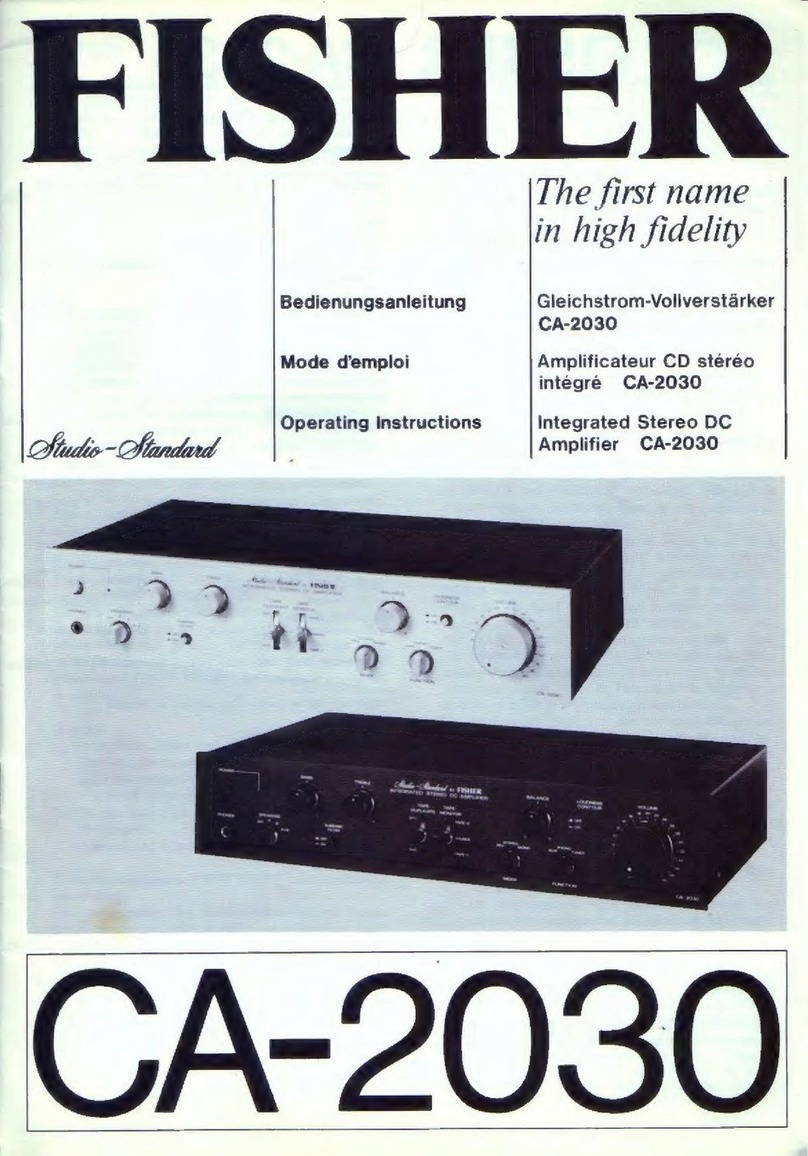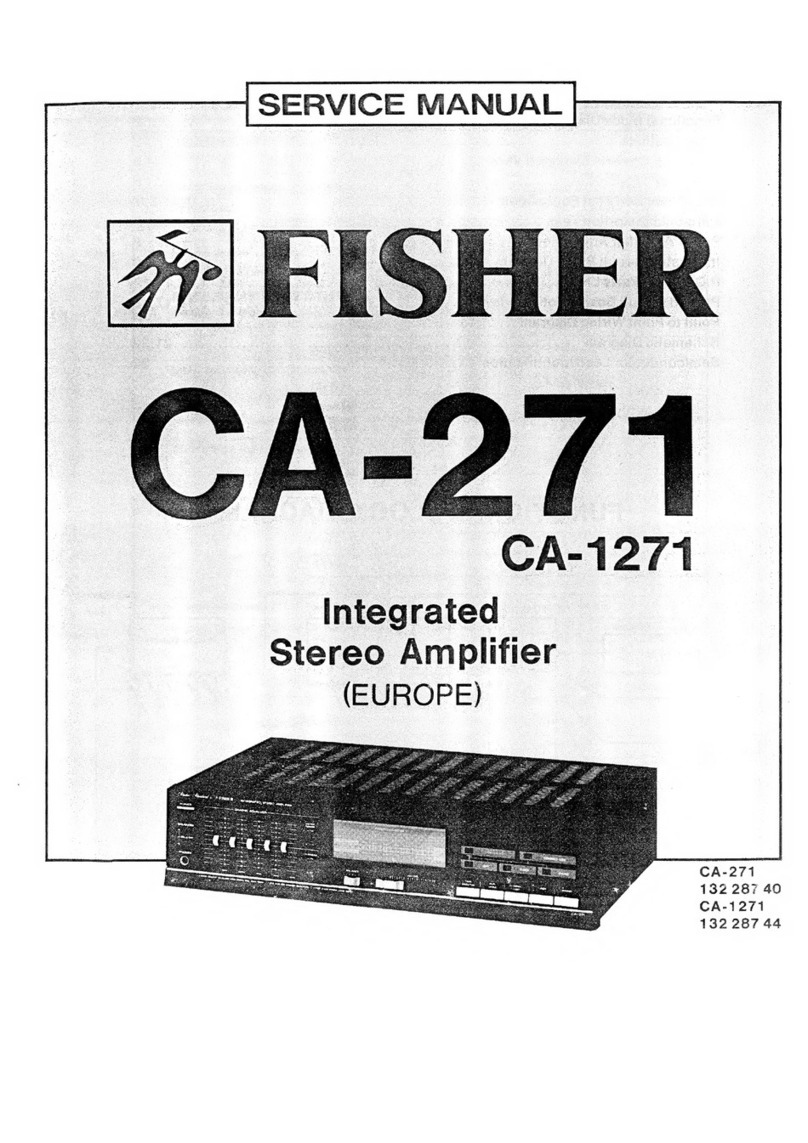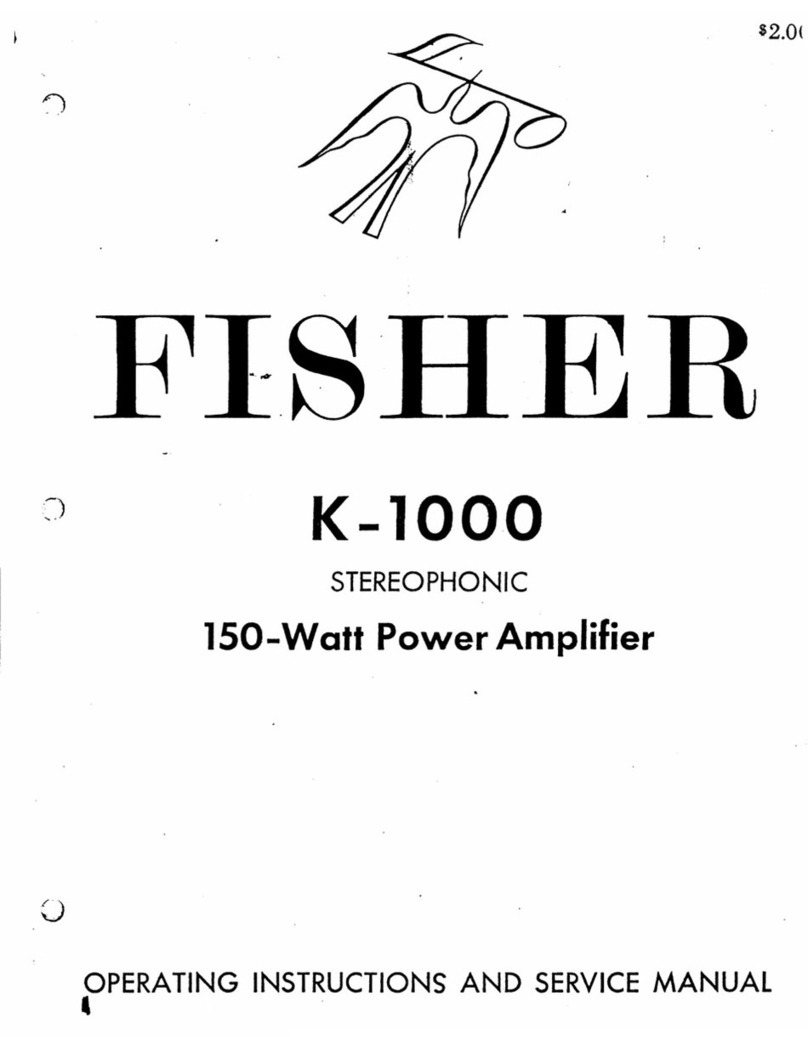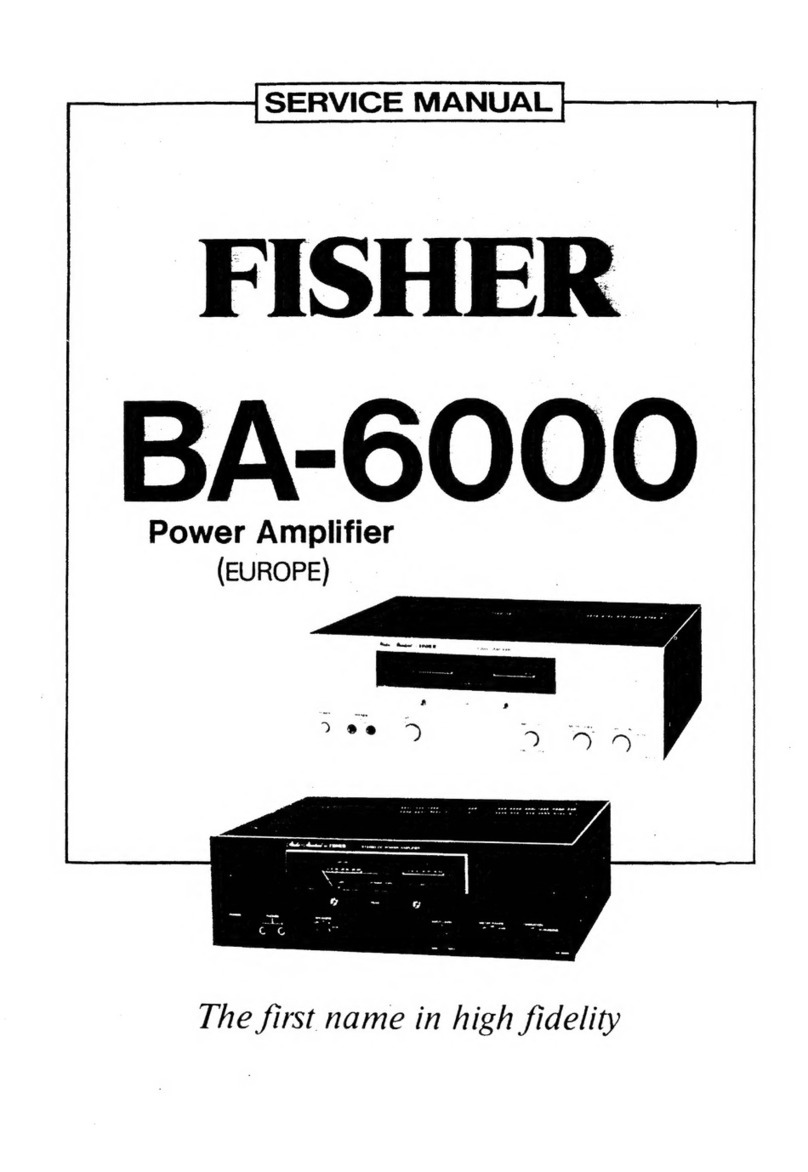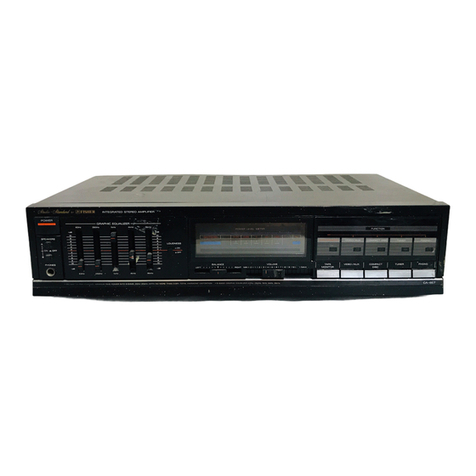Connecting q Cenler Chqnnel
In large tooms, where it may be necessary to space loudspeakers
farther apart to cover a wider area, a'ohole" may develop in the center'
This apparent lack of sound in the center will become more noticeable
as the distance between the two speakers is increased. It is possible to
fill in this gap with the addition o{ a center channel amplifier and
loudspeaker.
Th; X-100 is equipped with a Center Channel output jack which is
connected to a divider network across the output stages of Channel A
and B. Equal portions of the audio output signal from each channel
are thus combined to form a center "phantom" channel' By connecting
an additional amplifier and loudspeaker to this output jack, and posi
tioning the speaker between the left and right speakers, the stereo"
phonic pattern o{ sound will be augmented.
The third amplifier need not be equipped with tone controls' since
these are provided hy the X'100, A volume control, or input level con-
trol, will be helpful, however, in order that the volume of the center
speaker may be adjusted to the necessary level. Connect a short length
oI shielded cable, of the low-capacitance type, {rom the CENTER
CHANNEL output jack on the rear panel o{ the X'100 to an input
o{ the center channel amplifier. The length of cable from the amplifier
to the center speaker can be considerably longer (up to 100 feet, or
more) depending on the type of amplifier used.
The center speaker can also be used in an adjoining room or some
other remote location. Although the output from this extension speaker
will be monophonic, it will contain the composite stereo signal.
CONNECTING ASSOCIATED COMPONENTS
la\x rnu REAR PANELS of the X-100 are 14 input jacks and 3 output
Llju"k. to which can be connected tuners, tape recorders, tape
decks,'and record players with ceramic and magnetic cartridges. (See
Rear Panel, Figure 1.) The Channel A jacks are located directly on
(T'
the rear panel, while the Channel B jacks are located on top of the
chassis just alove the rear panel. (See tube layout Ior the X-100
Figure 2.) Information {or connecting the various-types of components
urJ "ontuin"d in this section. At the conclusion of this section' a table
is provided, Iisting all inputs, their impedances,-and the components
that may be connected to them, in addition to those outlined here'
Auxiliory AC RecePtocles
The two auxiliary receptacles on the rear panel may be used as
power outlets for your associated components' The combined power
Lorr.ornption of these components may not exceed 350 watts' Power
to the receptacles is supplied only when the power to the X'100 is
turned on.
ci
4theAandBoutput
I A and B, MAG 2 input
MAGNETIC MONOPHONIC CARTR.IDGE: Connect fhe output cable
from the record player to the Channel A or B, MAG 2 i.nnut jack:
(or to MAG I i{ these jacks are occupied.)
MAGNETIC HIGH TEVEL CARTRIDGE: Make connections to the
Channel A and B, CER PHONO input jacks for the stereophonic
type. Use Channel A or B for the monophonic type.
IMPORTANT: Because the impedance of these cartridges may varv
with difierent manufacturets, a resistor may have to be strapped across
the output terminals to insure the correct impedance match. Tables I
and 2 will serve as a guide lor using magnetic low level and magnetic
high Ievel cartridges, respectively. Remember to strap a resistot across
each output oI a stereophonic cartridge'
CERAMIC STEREO CARTRIDGE: Connect the A and B output cables
from the record player to the Channel A and B, CER PHONO


